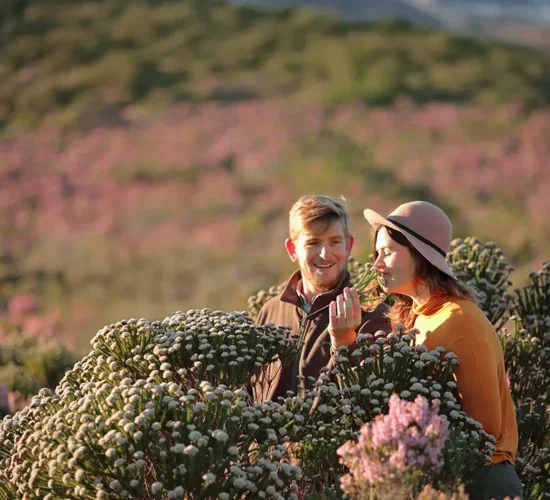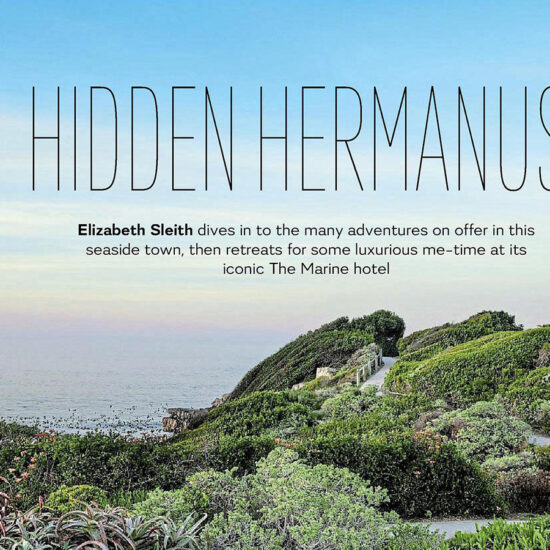Southern Right Whale

The Southern Right Whales come to the shores of the Cape Whale Coast in about June each year to mate and calve in the shallow waters.
Hermanus has gained the reputation of offering the best land-based whale watching in the world because of the excellent vantage points that the cliffs along Walker Bay provide. Many other villages such as De Kelders and Gansbaai also have fantastic land-based vantage points but in whale season you’ll even be able to spot whales while lying on the beach or eating breakfast on your patio.
Areas designated for boat based whale watching have been carefully selected so as not to interfere with those watching from the land (and the whales of course).
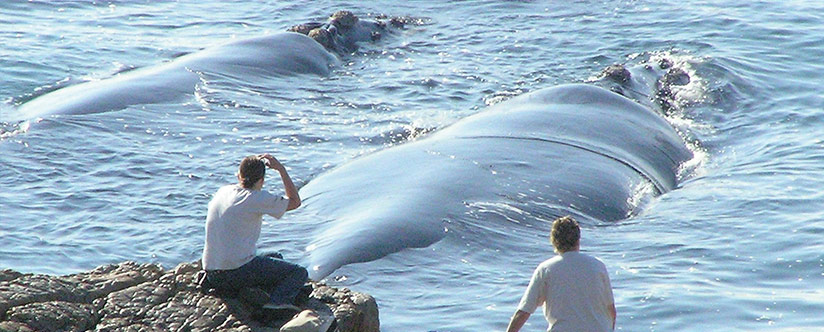
Description of a Southern Right Whale
The body of Southern right Whale is large and black usually with white patches on the belly. About 4% of calves are born mostly white. No dorsal fin. There are patches of roughened skin called callosities on head. These are covered in whale lice. Individual whales have unique callosity patterns. Flippers are broad and paddle-shaped. The blow is V-shaped.
Length: at birth average 6m
Adult length: up to 17m, average 14m
Weight: at birth 900kg
Adult weight: 30-60 tonnes, average 40 tonnes
Length of pregnancy: 1 year
Length of nursing: 6-12 months
Food: Copepods and krill, filtered through baleen plates on upper jaw. Eat between 600 and 1600 kg per day.
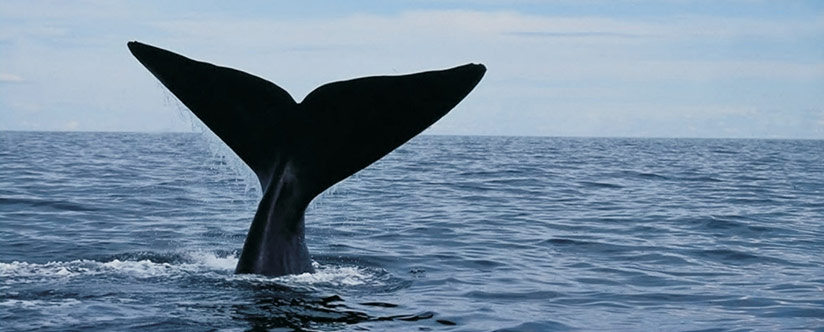
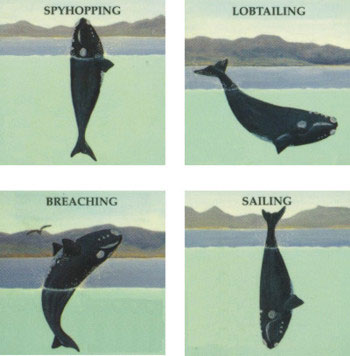 Behavior of a Southern Right Whale
Behavior of a Southern Right Whale
Spyhop: Raising the head out of the water to look around.
Lobtail: Striking water with flukes.
Sailing: Raising flukes out of the water for several minutes.
Breach: Jumping out of the water and landing with a big splash. Probably a form of communication and a way of getting rid of loose skin and parasites.
Playing with kelp: Whales lift pieces of loose kelp on head or back.
Mating: Several males and one female in active mating group.
Southern right whales spend the summer months feeding around Antarctica and then migrate thousands of kilometers to the sheltered bays of South Africa to mate and calve. They can be seen along the coast between June/July and December.
These whales were giving the name right whale because they were the ‘right’ whale to hunt. They are slow moving, occur close to shore, yield large amounts of valuable blubber and baleen and float when dead. They were close to extinction, but are now protected and their numbers are increasing at 7% per year. The southern African population is estimated to be around 3000 individuals.
- IncludedSouthern Right Whale
- Not IncludedNatureRelaxationHobbyEnthusiastsFamily-fun

